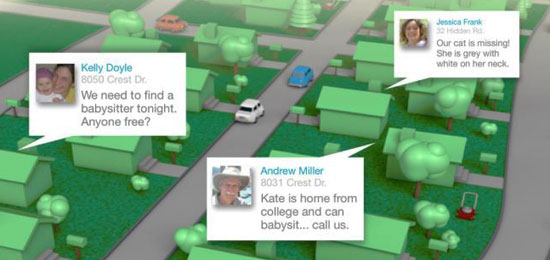Nextdoor on Wednesday announced it has received US$110 million in venture capital to grow its neighborhood-based network of residents and vendors.
Redpoint Ventures and Insight Venture Partners led the funding round. Also participating were new investors Meritech and Coatue, as well as existing investors Benchmark, Greylock Partners, Tiger Global Management, Kleiner Perkins Caufield & Byers, Comcast Ventures and Shasta Ventures.
Nextdoor plans to use the money to develop additional ways for members to benefit from the recommendations shared on the social network. Among its initiatives is extending the platform to connect neighbors with trusted local service providers and businesses, according to Nextdoor spokesperson Jennifer Burke.
“Building authentic local community takes time. Plus, people don’t know their neighbors — but we are changing that,” she told the E-Commerce Times.
Successful Startup
With this new round of funding, Nextdoor has raised a total of $210 million in four separate rounds since launching in October 2011. The company employs around 100 people.
Nextdoor has an advantage in attracting investors because it is localized to work with tightly knit neighborhoods, according to Rob Enderle, principal analyst at the Enderle Group. Vendors in the community do not get lost in the crowd of large regional vendors.
“Everybody can see the gold mine the company seeks,” Enderle told the E-Commerce Times, “but nobody has figured out how to build a bridge to it.”
Local Advantage
Nextdoor creates private neighborhood sites. The networking increases as people in a specific neighborhood get to know each other and ask each other questions. Nextdoor users exchange local advice and recommendations and organize virtual neighborhood watches to reduce crime.
The network has built-in security protections. For example, each Nextdoor neighborhood website is password-protected. It is not accessible by search engines. Also, members verify their address to join, making it safer to share information with others without worry.
Some 35 percent of U.S. neighborhoods use Nextdoor to create more-connected local communities, according to the company. It also works with about 650 local government agencies. This lets officials keep their communities up to date on important information, local crime reports and emergencies.
Putting High Tech to Work
One of Nextdoor’s goals is to use the power of technology to build stronger and safer neighborhoods. That creates the potential that attracts financing.
“To make money, the company has to focus on local business,” Enderle said. “The business potential is the ability to tap into what the larger companies can not touch.”
Challenging Model
The hyperlocal business model has been pretty common for roughly the last five years. Everyone seems to agree that the idea has a lot of potential, but so far it hasn’t been realized. A few businesses, such as Foursquare, have been successful, but by and large the business model seems to have flopped.
Startups in this space face two main challenges, according to Max Galka, cofounder and CEO of Revaluate.
“Like any social media startup, they face the chicken-and-egg problem of getting initial users to sign up without a pre-existing user base.” he told the E-Commerce Times. “However, for hyperlocal startups, this problem is an order of magnitude larger, since they face this same issue in every local area that they cover.”
The second challenge is generating revenue. Most hyperlocal startups have attempted to monetize through local businesses advertising. Local businesses typically do not have large advertising budgets, but the bigger problem is the size of the sales force this strategy requires, Galka explained.
Perhaps the biggest hurdle is scale — but this funding gives Nextdoor the runway to achieve it, said Kim Garretson, business development advisor at Trackif for Business.
“My network is close to reaching 1,000 members, and when you add the other first ring suburbs of the Twin Cities, at a scale of perhaps 10 to 20 thousand households, the possibility for monetizing these members with advertising and commerce, such as event ticket sales, becomes viable,” he told The E-commerce Times.
“With automated digital advertising and content now available at a ZIP+4 level — as small as a single street,” Garretson said, “the personalization and targeting to Nextdoor members gets interesting to me.”













































Social Media
See all Social Media